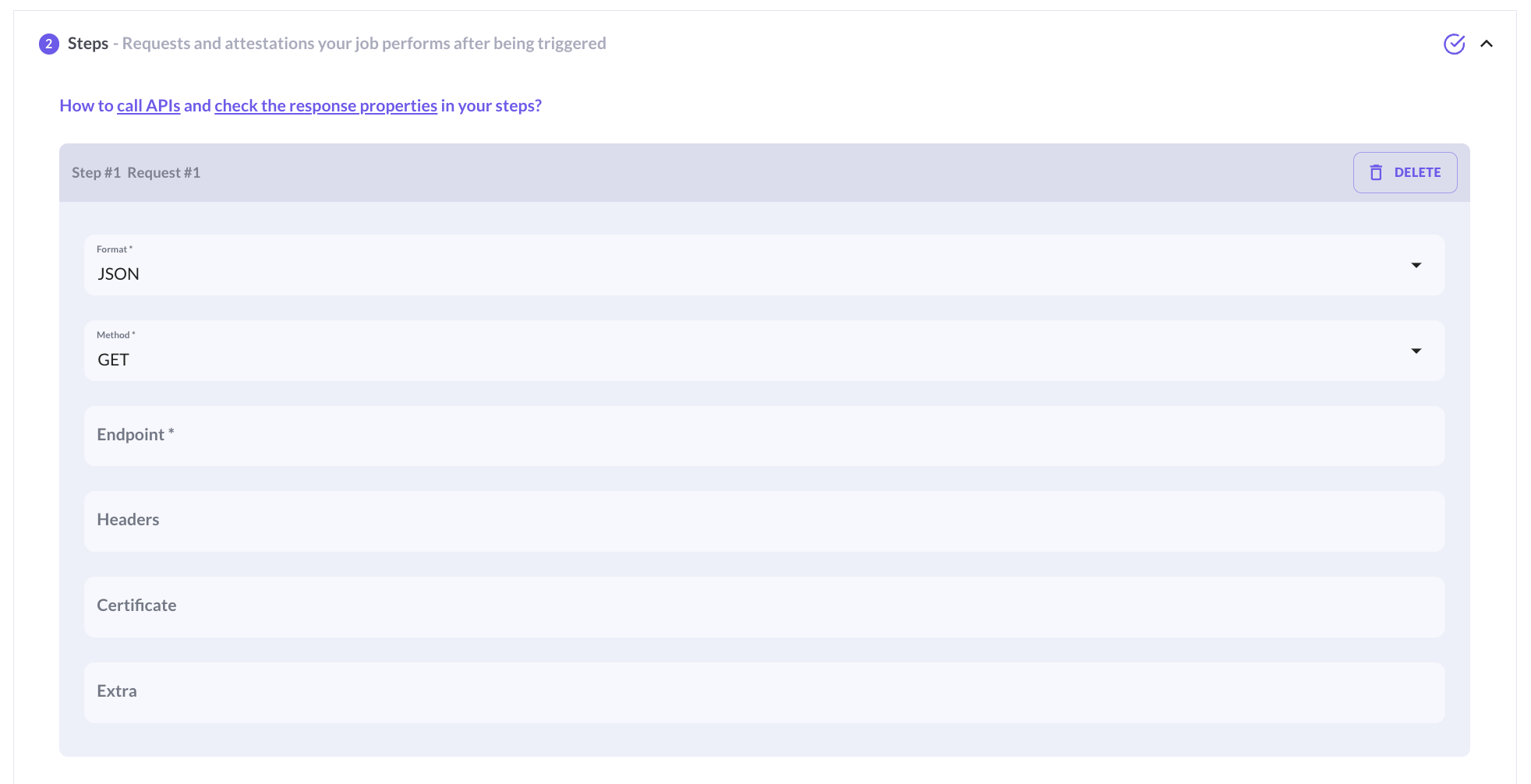The steps are the core items to customise the job. As already mentioned, the steps are of 2 types: request and attestation.
In this section we explain how to configure a Request Step.
The scope of this step is to connect with the required API. In the request step, you can define the format of the API payload (for now, only JSON format), the method to use, the endpoint, specify headers, add the secrets to use, body, and any certificates for the API call.

Figure 1 Request Step
As previously mentioned the format is prefilled with JSON, please make sure that the API has this format.
The method to call can be GET, POST, PUT, PATCH, and DELETE.
The endpoint is the url to call for the API.
Optional fields are headers, body and certificates.
In the request step, it is possible to use variables and data sources. If you want to know more, check the dedicated section Use Variables and Data Sources.
To access private APIs you need to insert your secrets. In order to add the secrets follow the dedicated article - Configure secrets - Once the secrets are configured you can add the secrets on the Headers field. If the name of the secret is: SECRET_KEY_1. Examples of syntaxes of the headers:
//Bearer Authentication
{
"Authorization":"Bearer ${SECRETS.SECRET_KEY_1}"
}
//API Keys Authentication
{
"Accept": "application/json",
"X-API-KEY": "${SECRETS.SECRET_KEY_1}"
}
//Basic Authentication
{
"Authorization":"Basic ${SECRETS.SECRET_KEY_1}"
}
The next article explains the Attestation step.